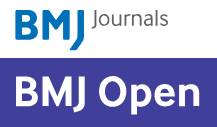Authors
Affiliations
- Endocrine Research Center, Institute of Endocrinology and Metabolism, Iran University of Medical Sciences (IUMS), Tehran, Iran.
- Digestive Disease Research Center, Digestive Diseases Research Institute, Tehran University of Medical Sciences, Tehran, Iran.
- Gastrointestinal and Liver Diseases Research Center, Guilan University of Medical Sciences, Rasht, Iran.
- Industrial Diseases Research Centre, Shahid Sadoughi University of Medical Sciences, Yazd, Iran.
- Liver and Gastrointestinal Diseases Research Center, Tabriz University of Medical Sciences, Tabriz, Iran.
- Health Promotion Research Center, Zahedan University of Medical Sciences, Zahedan, Iran.
- Department of Biostatistics and Epidemiology, Hearing Research Center, School of Public Health, Clinical Sciences Research Institute, Ahvaz Jundishapur University of Medical Sciences, Ahvaz, Iran.
- Colorectal Research Center, Shiraz University of Medical Sciences, Shiraz, Iran.
- Noncommunicable Diseases Research Center, Fasa University of Medical Sciences, Fasa, Iran.
- Social Determinants of Health Research Center, Research Institute for Health Development, Kurdistan University of Medical Sciences, Sanandaj, Iran.
- Maternal and Child Obesity Research Center, Urmia University of Medical Sciences, Urmia, Iran.
- Endocrinology and Metabolism Research Center, Hormozgan University of Medical Sciences, Bandar Abbas, Iran.
- Gastrointestinal Cancer Research Center, Non-Communicable Diseases Institute, Mazandaran University of Medical Sciences, Sari, Iran.
- Non-Communicable Diseases Research Center, Sabzevar University of Medical Sciences, Sabzevar, Iran.
- Modeling in Health Research Center, Shahrekord University of Medical Sciences, Shahrekord, Iran.
- Epidemiology and Biostatistics Department, School of Health, Shahrekord University of Medical Sciences, Shahrekord, Iran.
- Research Center for Environmental Determinants of Health (RCEDH), Health Institute, Kermanshah University of Medical Sciences, Kermanshah, Iran.
- Social Determinants of Health Research Center, Yasuj University of Medical Sciences, Yasuj, Iran.
- Digestive Disease Research Center, Ardabil University of Medical Sciences, Ardabil, Iran.
- Non-Communicable Research Center, Clinical Forensic Medicine and Toxicology Specialist, Rafsanjan University of Medical Sciences, Rafsanjan, Iran.
- Gastroenterohepatology Research Center, Shiraz University of Medical Sciences, Shiraz, Iran.
- Healthy Ageing Research Centre, Neyshabur University of Medical Sciences, Neyshabur, Iran.
- Liver and Pancreatobiliary Diseases Research Center, Digestive Diseases Research Institute, Tehran University of Medical Sciences, Tehran, Iran.
- Liver and Pancreatobiliary Diseases Research Center, Digestive Diseases Research Institute, Tehran University of Medical Sciences, Tehran, Iran. h.poustchi@gmail.com.
- Digestive Oncology Research Center, Digestive Diseases Research Institute, Shariati Hospital, Tehran University of Medical Sciences, N. Karegar Ave, 14117-13014, Tehran, Iran. malek@tums.ac.ir.
Abstract
Introduction: Over the past decades prevalence of diabetes has increased in Iran and other countries. This study aimed to update the prevalence of diabetes and prediabetes in Iran and to determine associated sociodemographic risk factors, as well as diabetes awareness and control.
Methods: This is a nationally representative cross-sectional survey that included 163,770 Iranian adults aged 35-70 years, from different ethnic backgrounds, between 2014 and 2020. Diabetes was diagnosed at fasting blood sugar of ≥ 6.99 mmol/L (126 mg/dL), or receiving blood glucose-lowering treatment. Multivariable logistic regression was applied to detect determinants associated with prevalence of diabetes and prediabetes, as well as predictors of diabetes awareness and glycemic control.
Results: Sex- and age-standardized prevalence of diabetes and prediabetes was 15.0% (95% CI 12.6-17.3) and 25.4% (18.6-32.1), respectively. Among patients with diabetes, 79.6% (76.2-82.9) were aware of their diabetes. Glycemic control was achieved in 41.2% (37.5-44.8) of patients who received treatment. Older age, obesity, high waist to hip ratio (WHR), and specific ethnic background were associated with a significant risk of diabetes and prediabetes. Higher awareness of diabetes was observed in older patients, married individuals, those with high WHR, and individuals with high wealth score. Moreover, glycemic control was significantly better in women, obese individuals, those with high physical activity, educational attainment, and specific ethnic background.
Conclusions: The prevalence of diabetes and prediabetes is increasing at an alarming rate in Iranian adults. High proportion of uncontrolled patients require particular initiatives to be integrated in the health care system.
Keywords: Awareness; Diabetes; Education; Ethnic background; Glycemic control; Household wealth.

